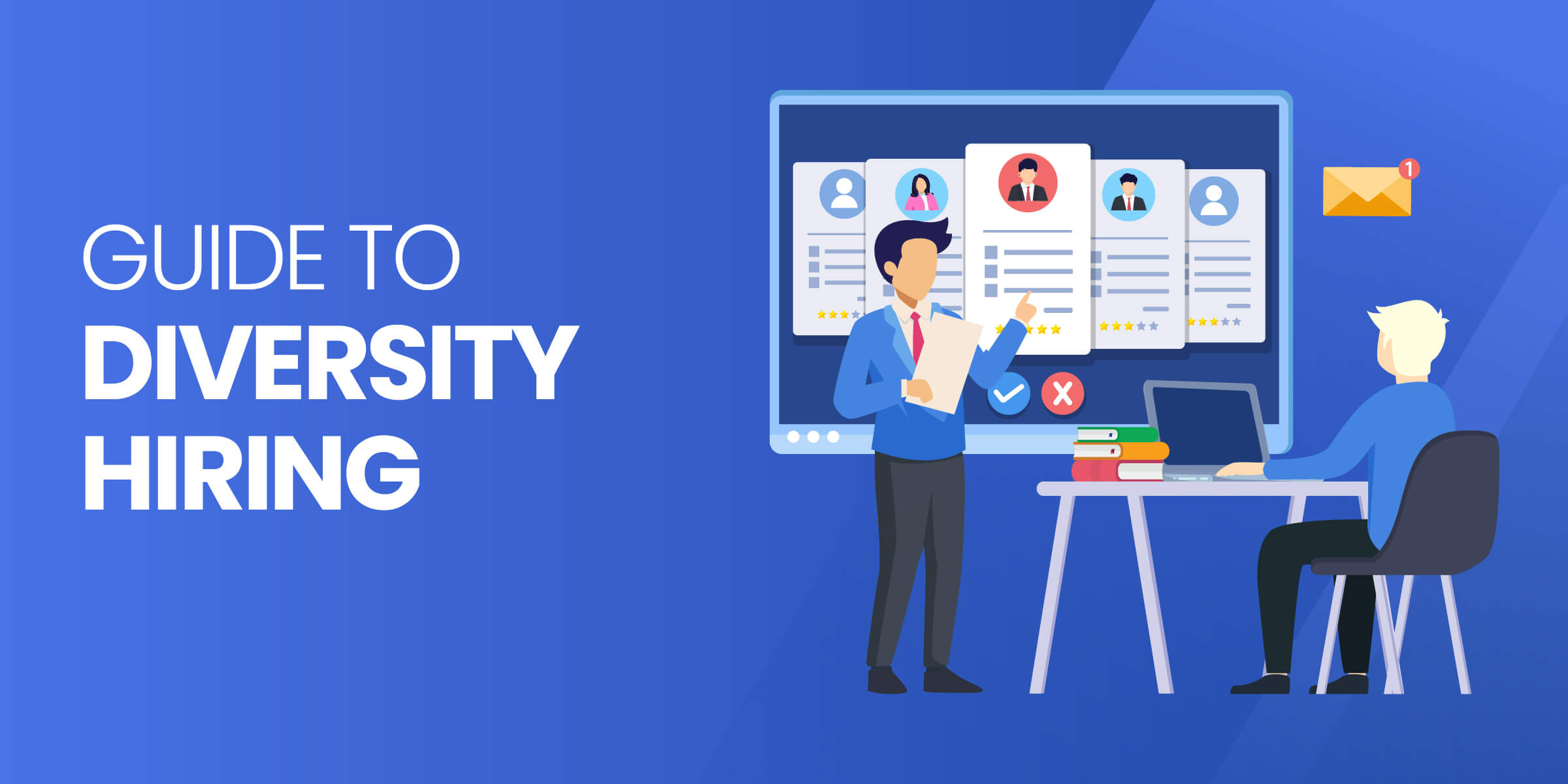To build the best business possible, you must attract top recruits with different perspectives and fresh ideas. A diverse workforce can lead to more creative and innovative solutions.
To do this, you need to prioritize diversity in your hiring practices.
I see great value in having input from people of different backgrounds, experiences, and characteristics, so I put together this guide to help with your next hire.
Table of Contents
- What Is Diversity Hiring & Why Does It Matter?
- Understanding Diversity in the Workforce
- Benefits of Diverse Workforce
- Diversity Hiring Challenges
- Preparing for Diversity Hiring
- Strategies/Steps for Implementing Diversity Hiring
- How to Measure Diversity Hiring Goals
- Case Study On Diversity Hiring
- Frequently Asked Questions
We offer this website completely free to our visitors. To help pay the bills, we’ll often (but not always) set up affiliate relationships with the top providers after selecting our favorites. However, we do our best not to let this impact our choices. There are plenty of high-paying companies we’ve turned down because we didn’t like their product.
An added benefit of our relationships is that we always try to negotiate exclusive discounts for our visitors.
What Is Diversity Hiring & Why Does It Matter?
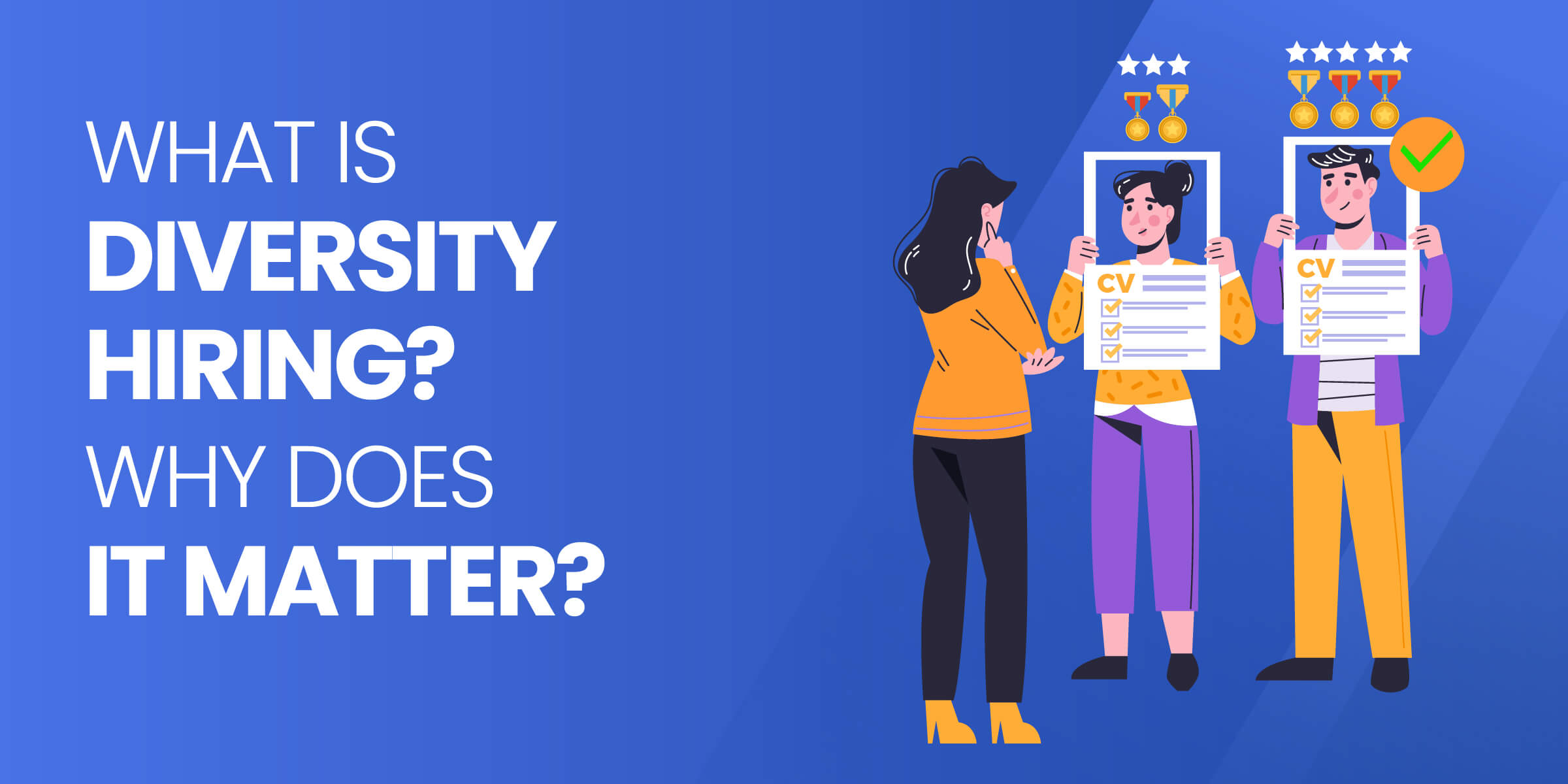

Diversity hiring includes processes that remove biases against qualities like race, sexuality, gender, religion, disability, and any other personal characteristics that have no bearing on a recruit’s talent.
Diversity hiring matters because collaborating with people from different backgrounds brings fresh insights and inspires innovation. If your staff is made up entirely of one demographic of person, you’re going to miss opportunities for growth and innovation.
Limiting yourself to a smaller candidate pool by not encouraging diversity keeps your options limited. You could be discouraging your possible next superstar employee from applying for a position without even knowing it.
It’s also just the right thing to do. There are people from all walks of life who are excellent at what they do. If you find yourself hiring the same demographic over and over, it’s worth evaluating any implicit biases you could have.
Understanding Diversity in the Workforce


In recent years, a growing number of recruiters implemented policies to ensure a more diverse workforce in the company.
Focusing on diversity in the workforce comes with plenty of benefits. However, it also poses some challenges as some businesses that want to increase diversity aren’t sure where to start.
Let’s discuss the benefits of this practice, how to overcome challenges and create strategies for hiring a more diverse workforce, and how to measure goals to stay on track with diverse hiring practices.
Diversity vs Inclusion: Know the Difference
There is a difference between diversity and inclusion. Both are essential to creating a strong, diverse workforce.
Think of diversity as step one. Diversity is hiring people from different races, genders, sexualities, ethnicities, religions, etc. Inclusion is creating procedures to ensure that everyone in the workplace feels included, valued, and safe.
While diversity is an important first step, follow-through with inclusion creates a truly fair workplace where diversity is celebrated.
Benefits of Diverse Workforce
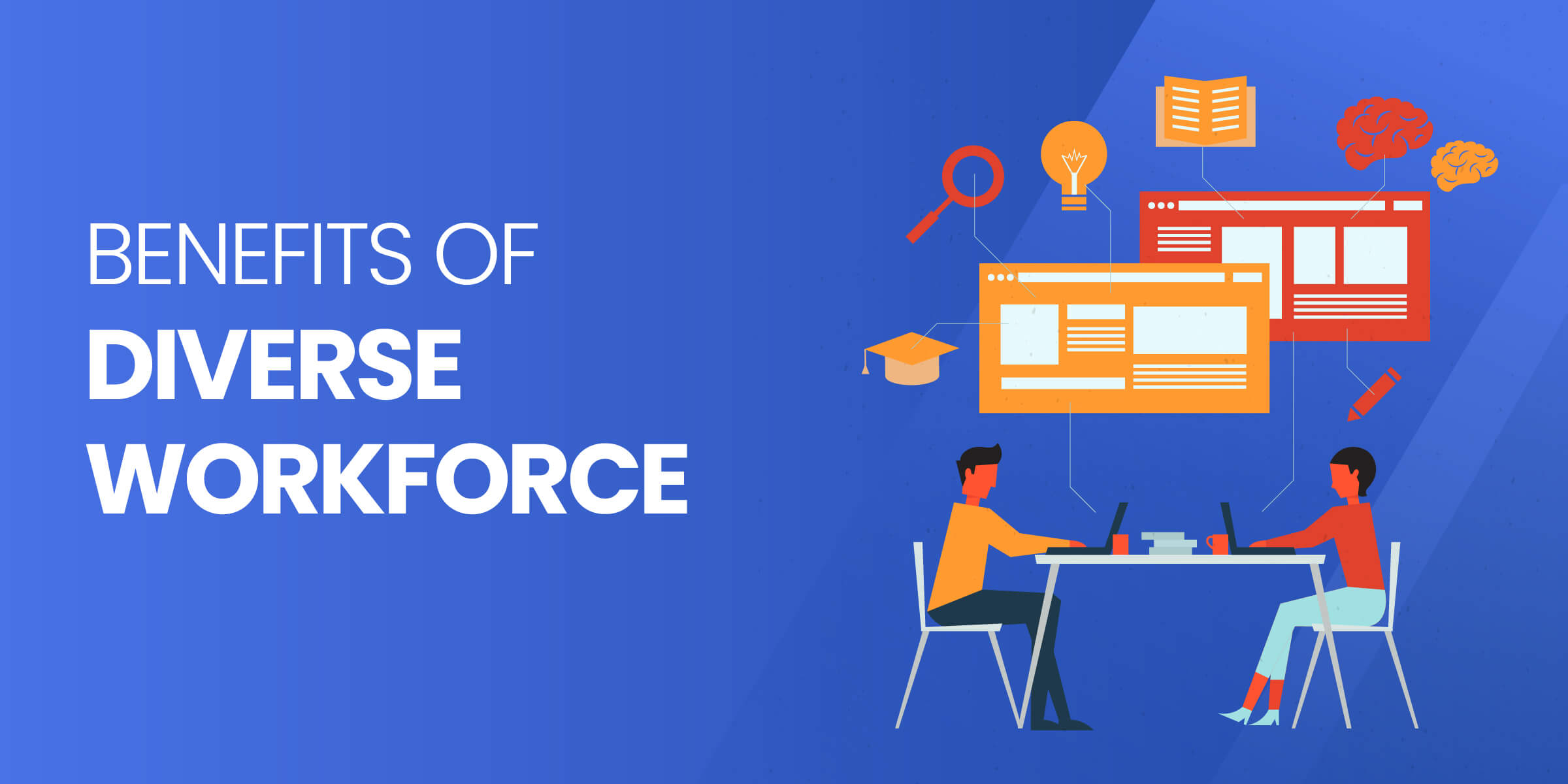

There are many different benefits of having a diverse workforce including a larger pool of talent to hire from, new insights and innovation, and opportunities for increased revenue and a more successful business overall.
Larger Pool of Talent
Prioritizing diversity also encourages a larger pool of talent to be drawn to your company. If talented recruits see that your company has employees from different backgrounds, they will be more inclined to apply for a position at your company.
On the flip side, if a recruit who is a person of color or a woman sees that all of your employees are white men, they may be hesitant to apply. This would raise a few red flags. For instance, they may think that you either don’t employ people from their background or that you treat them poorly so they don’t stick around.
Increase in Revenue
Having a more diverse workforce can also mean more financial success for your business.
According to ADP, companies in the top quartile for diversity financially outperform those in the bottom quartile.
Not only that, diverse companies had 2.3 times higher cash flow and are 70% more likely to capture new markets than companies that do not incorporate under-represented groups in their recruitment practices and do not focus on diversity.
New Insights and Innovation
Lastly, diversity in the workforce encourages innovation by connecting people with different life experiences and opinions in discussions on ideas for companies.
Our identities and life experiences shape the way we view and understand the world. When people with different backgrounds come together, we can approach ideas from several viewpoints to find more comprehensive solutions.
Diversity Hiring Challenges


Many business owners want to implement diversity hiring practices but don’t know where to start.
Unconscious Bias
The biggest challenge is unconscious bias. Since diversity has been so politicized, many people get defensive at the slightest mention of possible implicit biases. They view this as a personal attack on their character.
This, in turn, makes them unlikely to do some searching within themselves and their hiring processes. Business owners need to objectively address their own unconscious biases and biases that are present in their hiring practices.
Lack of Data
One of the other challenges of diversity hiring is a lack of data. Companies don’t identify areas where their company is lacking in diversity and they fail to track which groups are applying for jobs at their business, how far they get in the interview process, and how long they stay with the company when they do get hired. The key is to identify what works and what doesn’t so you can make improvements.
Lingering Effects of the Job Market
Another challenge is the way that the job market has negatively affected some candidates in the past. For instance, studies have shown that women feel they need to meet 100% of the job requirements, while men only feel the need to match 60%.
Because of a history of mistreatment and lack of opportunities for advancement in their careers, women do more research into who works at a company and who is in positions of power. If women notice that few women work at a company and none of them are in upper management, they’re less inclined to pursue work there.
Once companies have hired a diverse group of individuals, some fail to create an inclusive workspace that makes these employees want to stick around. If onboarding is consistently diverse but retention isn’t, you will fail to have a diverse workforce long-term.
Preparing for Diversity Hiring
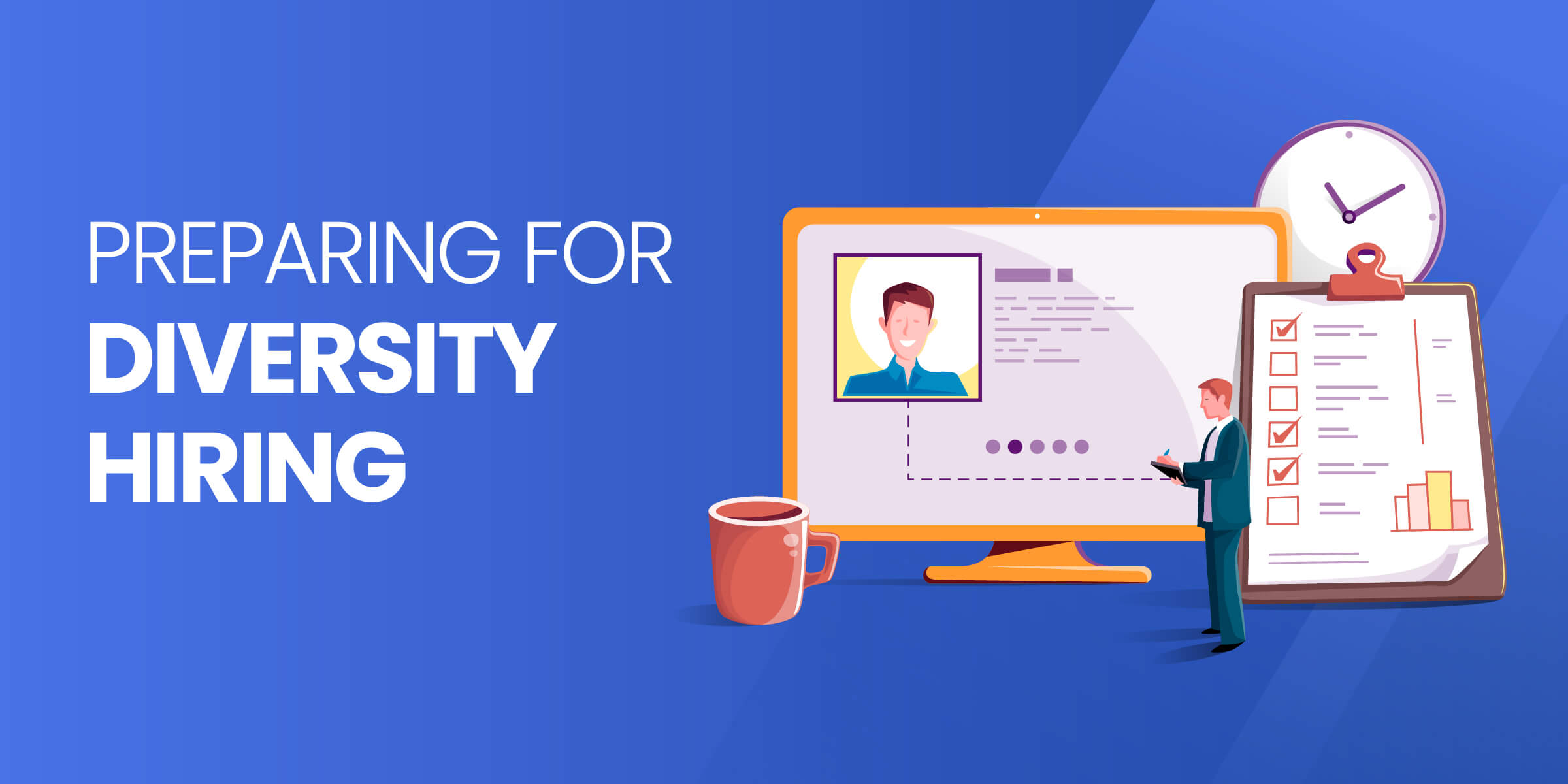

To prepare for diversity hiring, investigate your current hiring practices to identify any gaps and shortcomings.
Take a look at previous job ads. How is the wording? Could you make the verbiage of your recruiting ads more inclusive? Can you target the language to let underrepresented groups know why they would be a good fit for your company?
Then, look at the company culture you’ve established. What does your staff look like right now? Does it look monolithic? Has it been more diverse in the past?
Think about what your ideal candidates are looking for and where they’re looking. Seeing what a candidate might see from the outside looking in can help you create better job postings and more effective recruiting methods. Having a diverse recruiting team is a great way to make candidates have a positive first impression of your company.
Lastly, make sure that you have a plan in place. To be intentional about hiring a diverse team, you need to be strategic and intentional with your processes.
We’ll cover some strategies and steps for implementing diverse hiring practices in the next section.
Strategies/Steps for Implementing Diversity Hiring
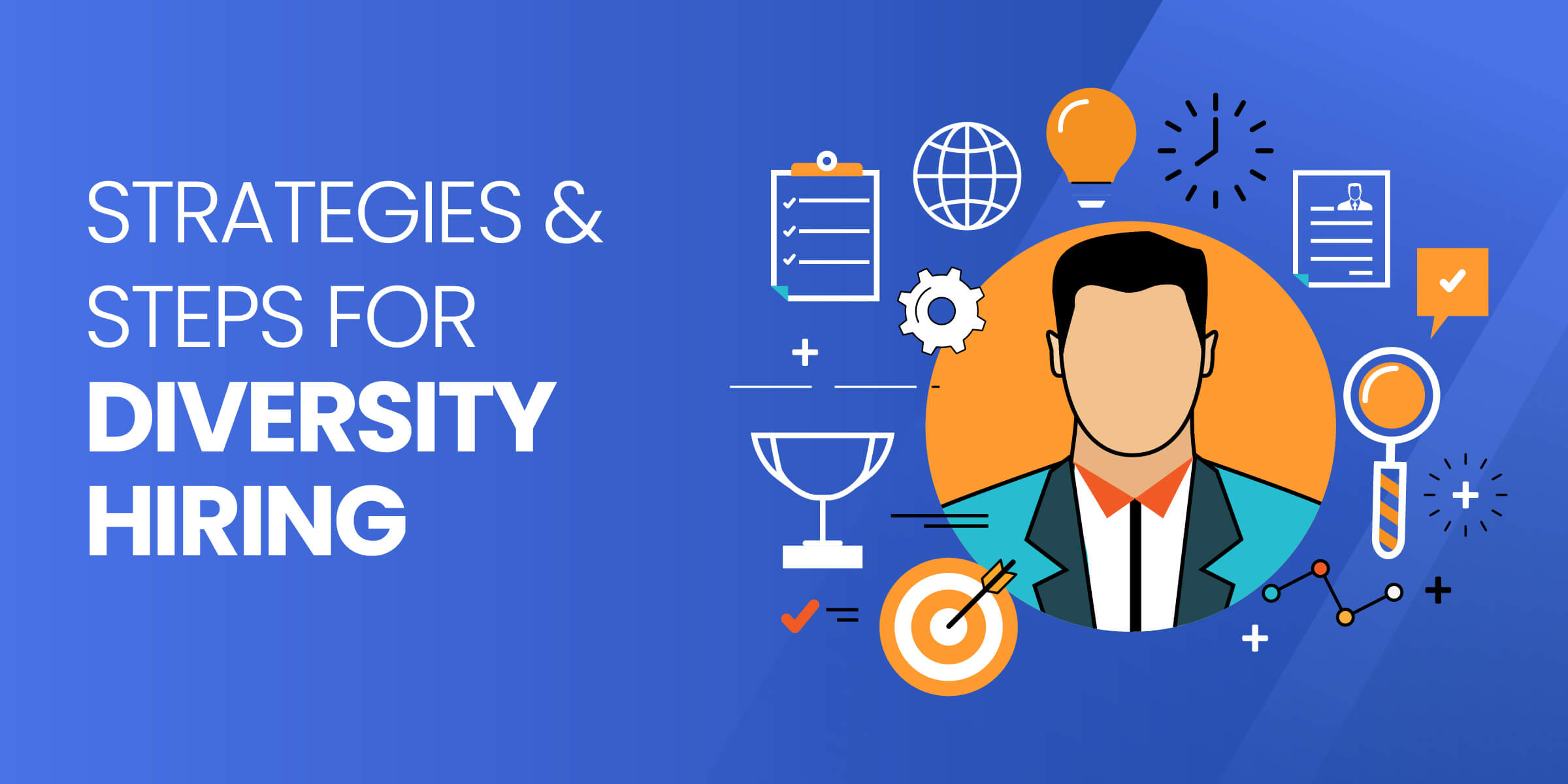

Here are some steps and strategies to implement diversity hiring effectively.
Set SMART Goals
Set SMART goals: Specific, Measurable, Achievable, Relevant, and Time-Bound. Setting SMART goals for your diversity hiring initiatives is key to making sure you follow through with what you set out to achieve.
For instance, you could start by saying you want to diversify your recruiting process and acquire more diverse applicants. Then, set a timeline for when you want these practices to improve and check in to see how your strategy is progressing, pivoting and altering processes as time goes on.
Develop a Good Employer Brand
First, you need to create a brand that diverse candidates will want to work with. Take a look at your mission statement, your team, and your job postings, or hire a brand manager to help you create the blueprint for an inclusive culture.
This also includes training current employees on diversity and inclusion practices (which you should also offer to new employees.)
Audit Job Postings
Look at your job postings and edit the language to make it inclusive and appealing to candidates from different backgrounds.
Think about what your candidate is looking for in an employer and make sure you offer those benefits. For instance, LGBTQ applicants may want short-term leave options for fertility appointments or adoption.
Many diverse candidates will look for things like paid parental leave, floating holidays, remote work opportunities, and opportunities for professional development. Make sure you list these benefits in your job description.
Provide Diversity Training
As your business grows, don’t overlook things like diversity training. To create a truly diverse and inclusive workplace, you need to train all new (and existing) employees on inclusion practices.
Continue Efforts
Unfortunately, many businesses attempt to implement diverse hiring practices only to drop the ball and fail to continue making changes and putting in effort to create the diverse workplace they set out to create.
Make sure that your business has accessibility tools to make accommodations for employees with disabilities.
Performing regular audits of your practices and employee satisfaction is essential to keeping a diverse workplace.
How to Measure Diversity Hiring Goals
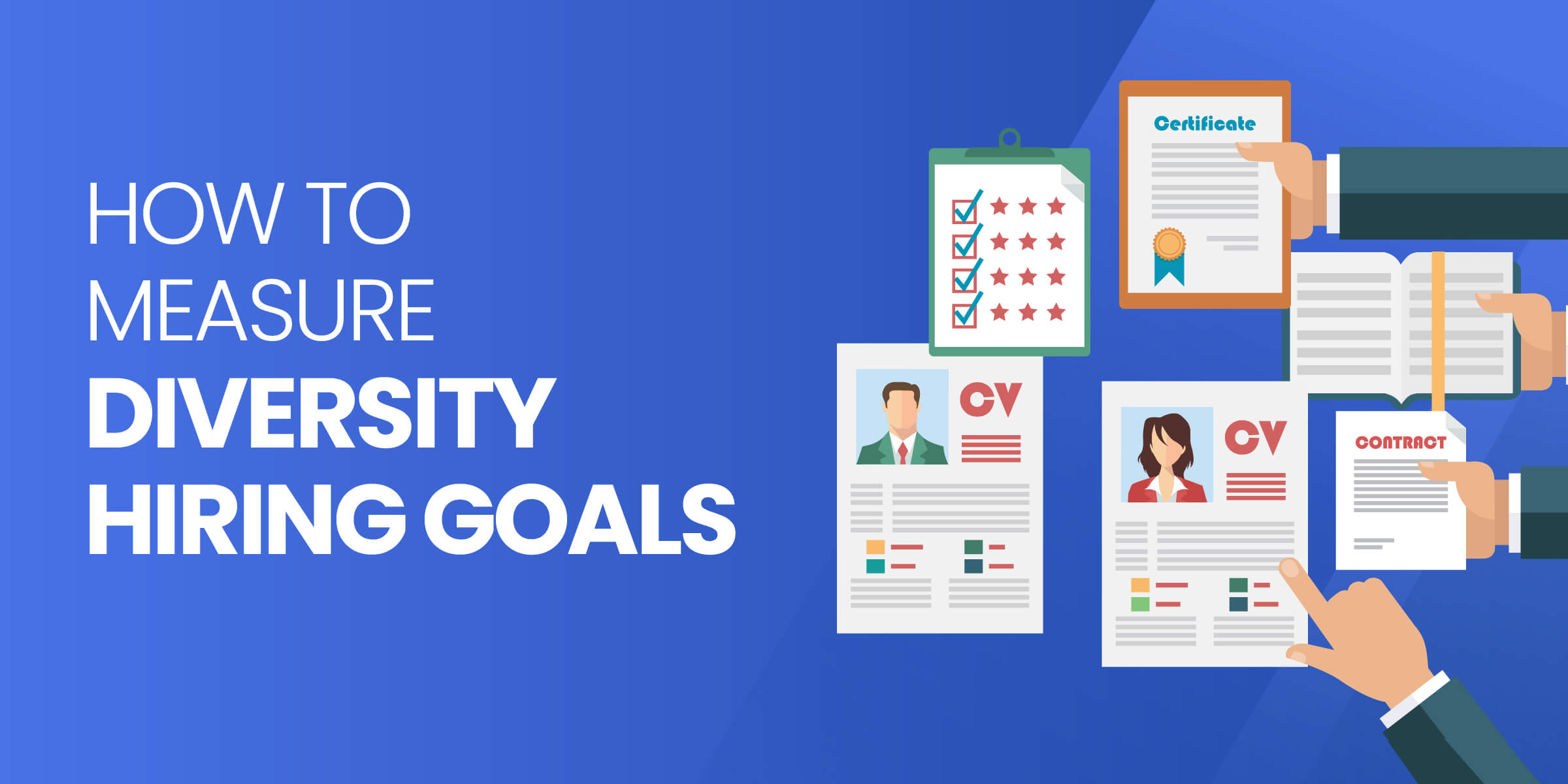

How do you know whether you’re making progress? Here are a few diversity metrics:
- Diversity in your candidate pool– How many candidates from underrepresented groups actually apply?
- Diversity in candidates hired- How many hired candidates are from underrepresented groups?
- Pay equity- Is there a large disparity between how much employees from underrepresented groups are paid vs. other employees?
- Representation- Quantify the percentage of employees’ demographics by level and function.
- Promotions- Are promotions being given out equally among employees from different genders, races, ethnicities, abilities, etc.?
- Retention- How long do employees from underrepresented groups stick around for a long period of time?
Measuring the demographics of your workforce in quantitative ways can help you track how diverse your practices are and identify areas for improvement.
Case Study On Diversity Hiring
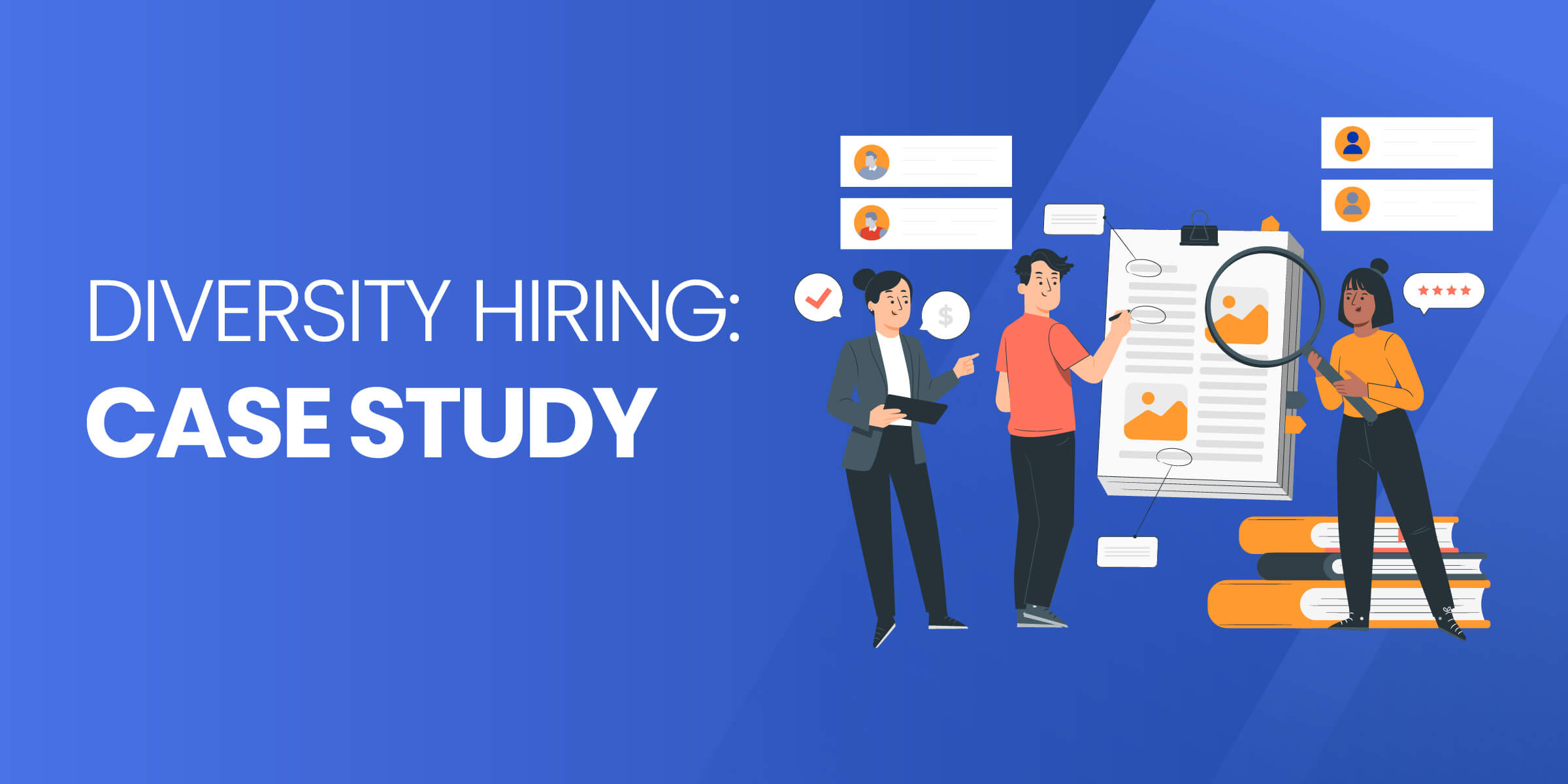

Here are some success stories of businesses that have effectively implemented diverse hiring practices.
Netflix
According to Netflix's inclusion report, they have made hiring diverse employees a priority and invested around $29 million globally in implementing more diverse hiring practices.
This includes inclusive benefits like “gender-inclusive parental leave and family-forming support for employees regardless of marital status, gender, or sexual orientation.” They also made enhancements in areas of “transgender care, mental health, and neurodiversity, as well as backup caregiving in various offices around the world.”
In the U.S., they “expanded the number of Hispanic Serving Institutions (HSI), Historically Black Colleges and Universities (HBCUs), and Minority Serving Institutions (MSI) represented in their Pathways Bootcamp designed to encourage BIPOC students more access to the tech world.”
By intentionally investing resources into hiring a diverse workforce and ensuring more women and minorities have access to the same opportunities as their counterparts, 52% of their workforce globally is women while 45% are men. 51.4% of leadership positions are also held by women.
As for race breakdown, over half of their US workforce (52.9%) is made up of people from one or more historically excluded ethnic and/or racial backgrounds, including Asian, Black, Hispanic or Latino/a/x, Middle Eastern or North African, Native American and Pacific Islander. People from these groups also hold 41.5% of leadership positions.
Frequently Asked Questions
Is diversity hiring the same as affirmative action?
While diversity hiring and affirmative action go hand-in-hand, affirmative action takes a numbers-based approach to hiring while diversity hiring aims to diversify the organizational culture.
How can small businesses implement diversity hiring?
Small businesses can implement diversity hiring by setting goals, changing the work culture to be more inclusive, auditing job postings to have more inclusive language, offering benefits to attract people from underrepresented groups, and examining internal practices that may be biased.
Are there specific tools to aid in diversity hiring?
Yes, there are specific tools to aid in diversity hiring, including AI-driven talent platforms, diverse resumé databases, and tools for diversity tracking metrics across the employee lifecycle.
Is diversity hiring ethical?
Yes, diversity hiring is ethical, and a great way to bring in underrepresented employees with different insights and foster the creation of innovative solutions.














